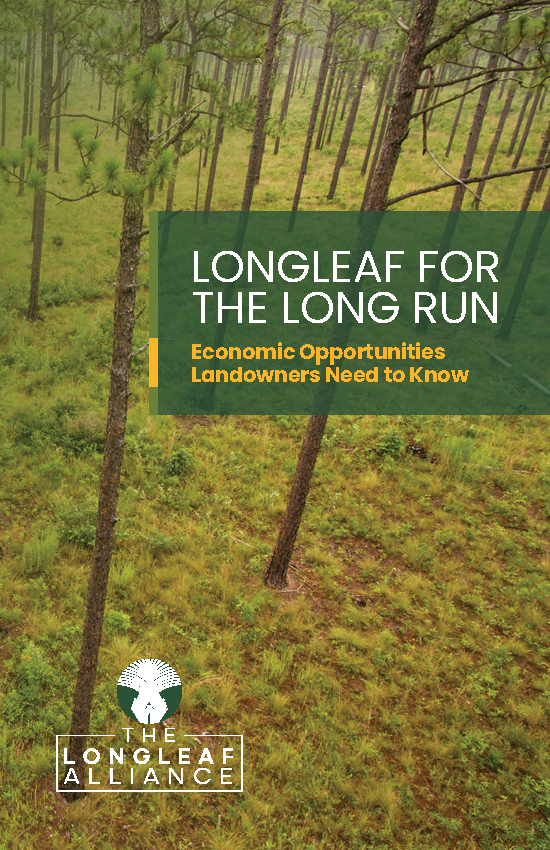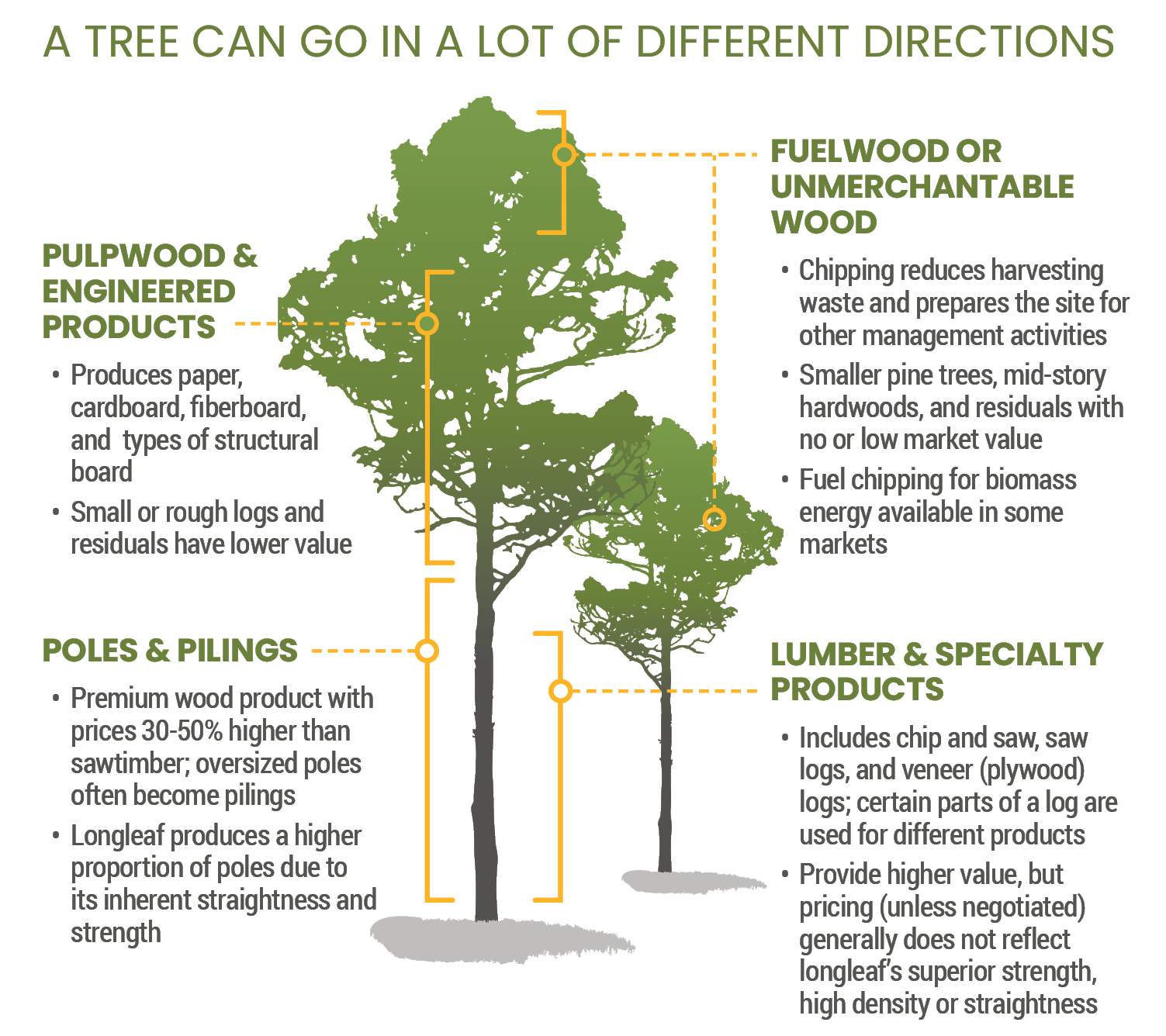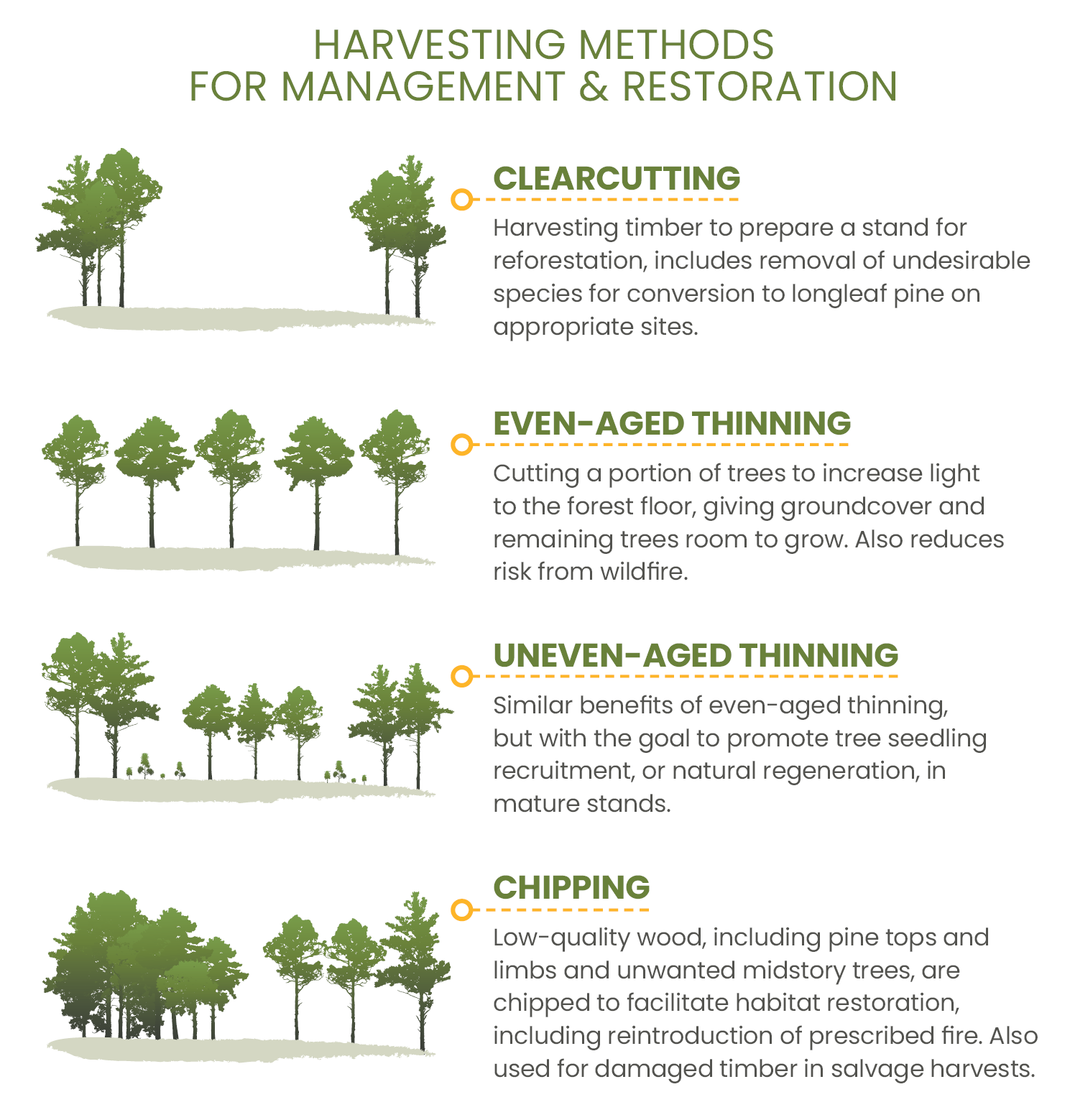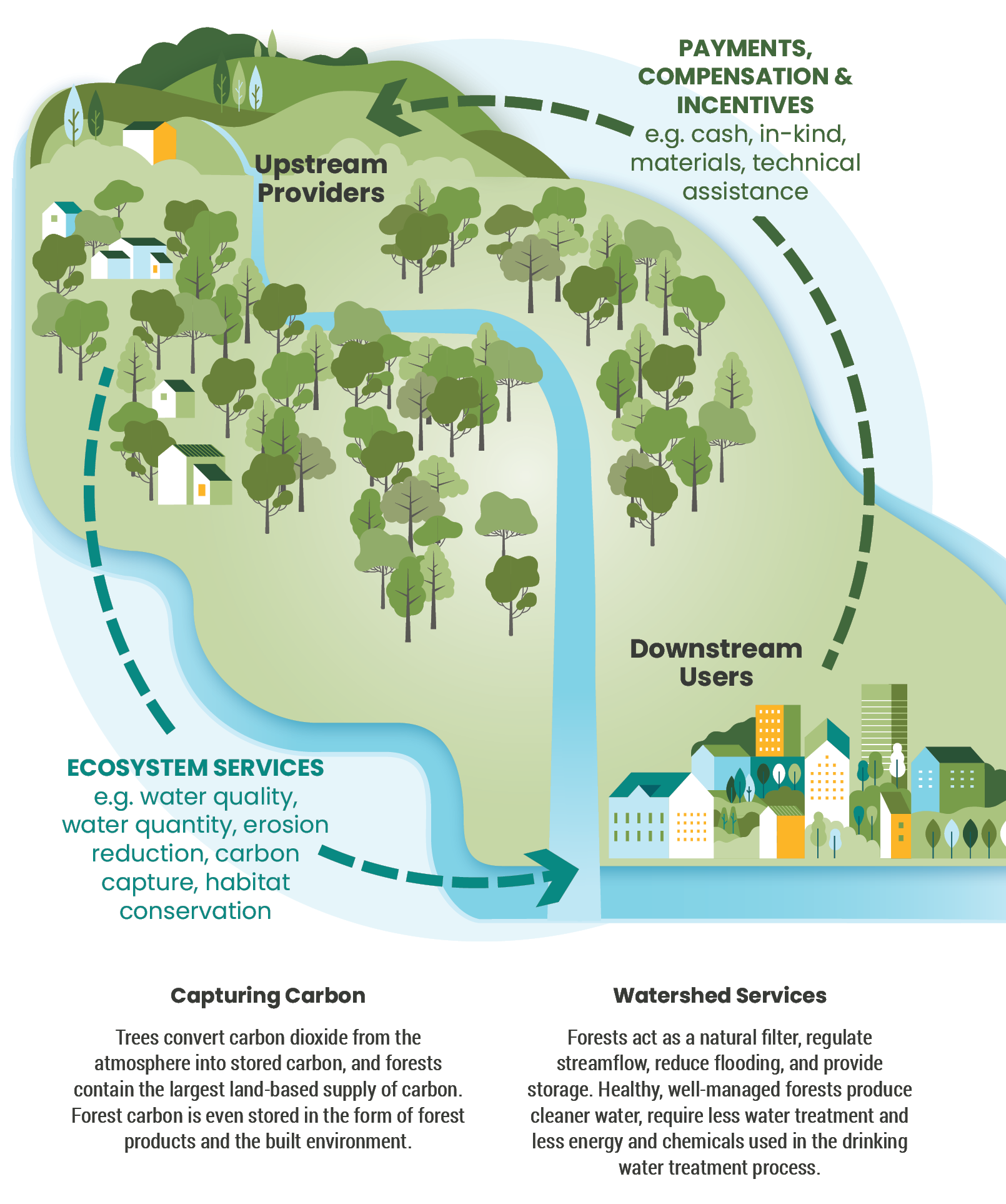Longleaf for the Long Run
August 3, 2023
Economic Opportunities Landowners Need to Know
Longleaf pine ecosystems historically dominated the Southeast, occurring on 90 million acres from Eastern Texas to Southern Virginia. With only a fraction of longleaf remaining today, landowners have many reasons to restore this iconic species while realizing its economic and ecological benefits.
The Longleaf Alliance's newest outreach resource Longleaf for the Long Run introduces landowners to opportunities realized from actively managed longleaf stands and factors to consider to make the most out forestry investments.










